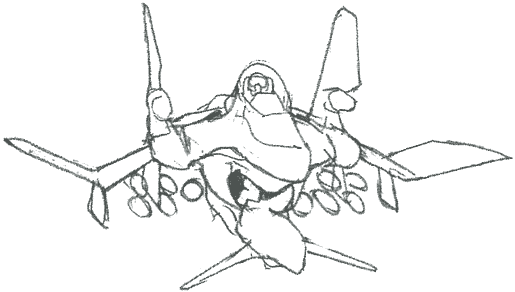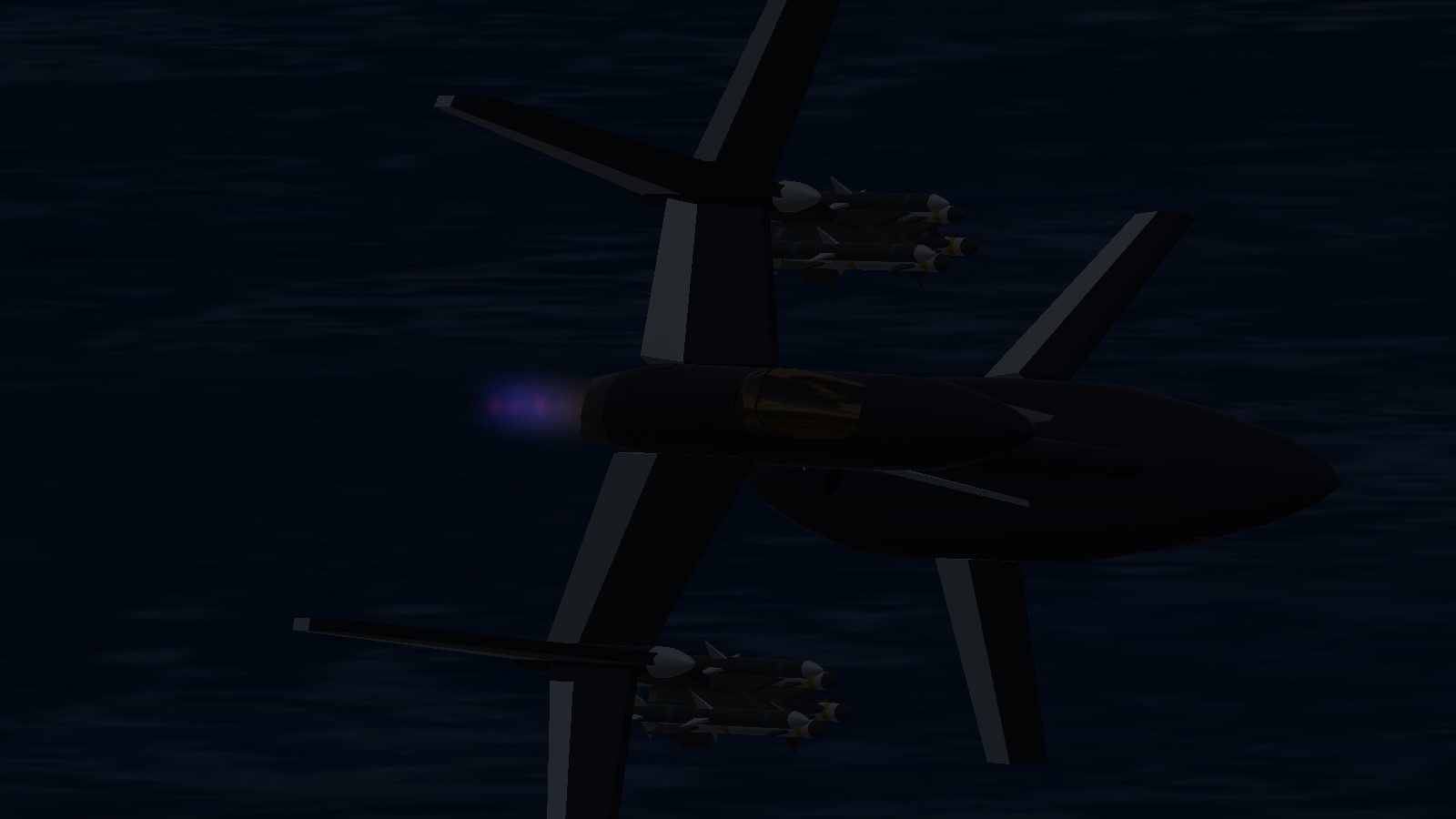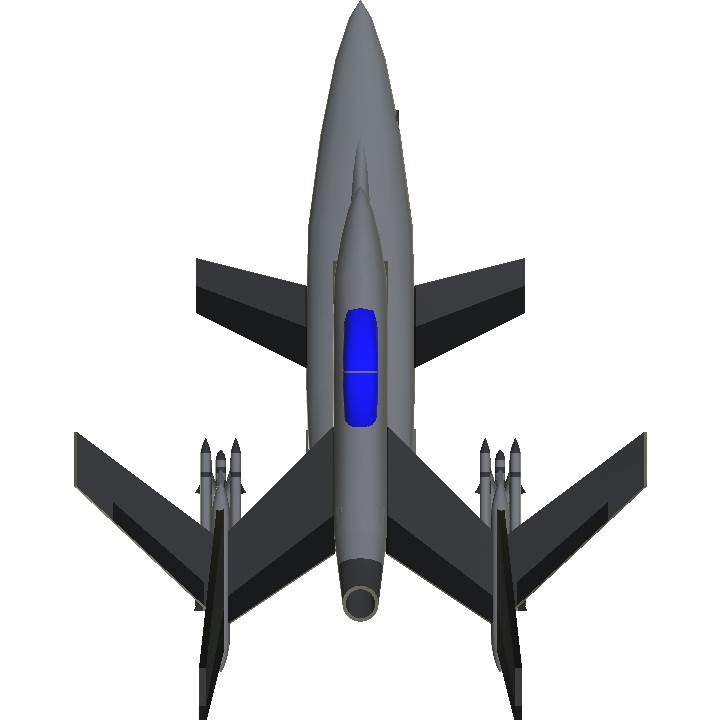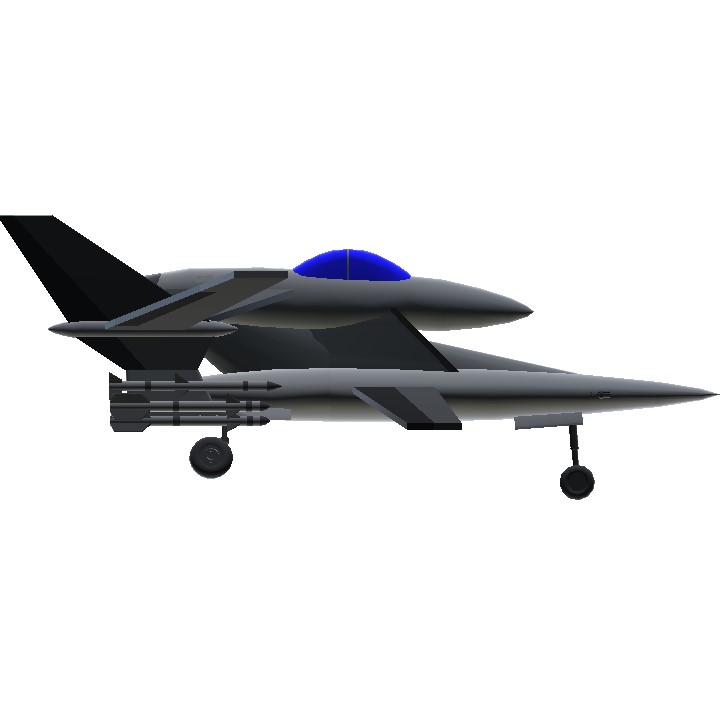Yukikaze Fand Concept
OPERATIONS:
AG-1 = Plasma Drive
Everyone who knows Yukikaze should know about the FA-1 Fand and FA-2 Fand II designs. According to lore, the FA-1 Fand (first version) was designed and produced in Japan (makes sense as it looks a lot like the F-2A). Well, I was looking at the FA-1 Fand page of a website with some Yukikaze info on it, and I saw one of the concept/production drawings for the Fand that obviously wasn't utilized. It was this goofy-looking, stubby double-body fighter design, and I thought it looked pretty cool, so I decided to try to make it in SP. If anyone runs out of ideas for fighter jets, I highly recommend the Yukikaze concept/production drawings for some inspiration that can be found on the website I linked. But not long into designing it and after a few trials, I quickly found the design to be horrendously unstable so I had to make a lot of tweaks to the design. But after nearly giving up on this plane, I finally found a "sweet spot" wing layout (also utilizing stacked wings) to give the Fand good maneuverability and stability.
(Story)
While Japan successfully found foreign partners (mainly from the US) to co-produce Japan's long-awaited F-3 Fighter to replace their F-15 and F-4 fleet, and the F-35 replacing the F-2 for the most part, they were also interested in a home-grown air-base defense fighter. Japan studied designs and proposals from various manufactures. Japan would name this fighter "Fand". After Rainier's joint-involvement with Mitsubishi and Northrop Grumman on the F-3A Shinsakuto, Rainier and Mitsubishi decided to partner again on a radical experimental base-defense fighter concept.
This Fand concept utilized a few radical untested fighter technologies. If produced, this version of the Fand would have been the world's first "double-body" fighter design. However the craziness of the tech didn't stop there. Rainier and GE had been experimenting on aircraft engine technologies for the past few years, and Rainier engineers came up with a new kind of electric-propulsion for aircraft; dubbed "Plasma Drive". Plasma Drive was a form of electric-propulsion that utilized a pure plasma jet engine. In this case, it was more of a ramjet, but basically the Plasma Drive would compress the incoming air much like a regular ramjet, but instead of fuel being thrown into the air and ignited, super-heating electric tiles lined the top and bottom of the ramjet, and they would super-heat to extreme temperatures that would rapidly expand the air and heat it, giving it a similar effect to a normal jet engine. The Plasma Drive received it's electricity from a generator that was powered by a shaft connected to the regular gas-burning combustion turbofan jet engine, making the whole system a hybrid-propulsion system.
While very promising, especially with the prospects of hybrid/electric technologies, and the use of a double-body highly efficient design at all speeds, Japan ultimately decided on rejecting this version of the Fand due to the incredibly high risks with the untested tech and the high-cost of development. Instead, Japan opted for Mitsubishi to produce a design based on the F-2A to keep development costs low for this FA-1 Fand base-defense fighter.
Rainier continued on their concept alone afterwards, although they mainly focused on the Plasma Drive hybrid-electric propulsion system and planned on using a larger aircraft as a test-bed first.
The double-body aircraft design wouldn't see much attention until 2037, during the 30-year long war on the JAM, when the Systems Corps on the planet Fairy revived the double-body design for their FA-1 Fand replacement, the FA-2 Fand II, utilizing design elements from Rainier's FA-1 Fand concept.

Enjoy!
Specifications
General Characteristics
- Successors 1 airplane(s)
- Created On Windows
- Wingspan 25.5ft (7.8m)
- Length 32.5ft (9.9m)
- Height 12.7ft (3.9m)
- Empty Weight 10,801lbs (4,899kg)
- Loaded Weight 14,108lbs (6,399kg)
Performance
- Power/Weight Ratio 2.389
- Wing Loading 75.4lbs/ft2 (367.9kg/m2)
- Wing Area 187.2ft2 (17.4m2)
- Drag Points 2505
Parts
- Number of Parts 60
- Control Surfaces 10
- Performance Cost 441














